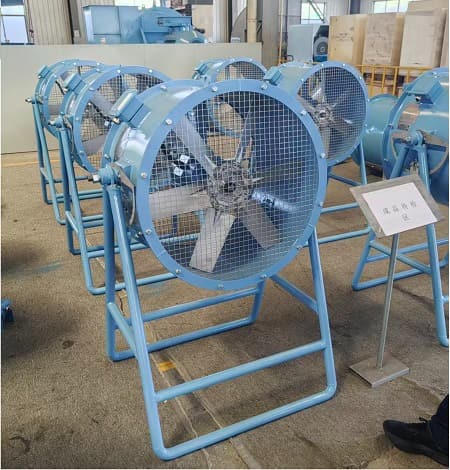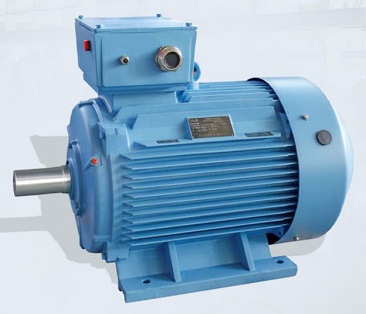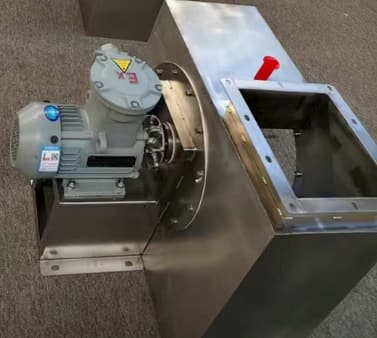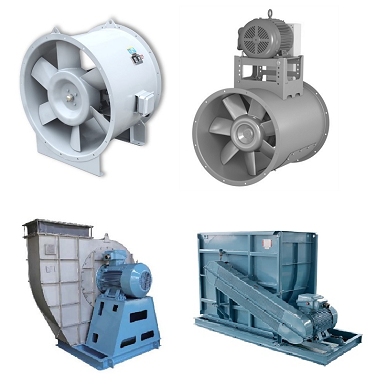Axial Centrifugal Fan: Hybrid Approach to High-Efficiency Air Movement
As HVAC systems evolve to meet the increasing demands of compact installation spaces, higher static pressure, and energy efficiency, hybrid ventilation technologies are becoming more relevant. Among these, the Axial Centrifugal Fan—a unique configuration that blends characteristics of both axial and centrifugal fans—stands out as a high-performance solution for challenging airflow scenarios.
This fan type is particularly valued in applications where space constraints limit the use of traditional centrifugal fans, yet a pure axial fan cannot provide sufficient static pressure. It offers a well-balanced compromise between space efficiency, directional airflow, and enhanced pressure capability, making it ideal for specialized industrial, transit, and commercial building ventilation systems.
What Is an Axial Centrifugal Fan?
An Axial Centrifugal Fan (sometimes referred to as a centrifugal impeller axial fan) is a hybrid design that typically features:
-
A backward-curved centrifugal impeller, often resembling those used in centrifugal fans;
-
A cylindrical or tubular housing, like that used in axial fans;
-
Axial airflow direction, meaning air enters and exits the fan parallel to the axis of the impeller.
While the impeller form draws from centrifugal design, the airflow remains axial, which differentiates these fans from conventional centrifugal models that redirect airflow at 90 degrees.
Due to this structure, axial centrifugal fans are commonly grouped under the axial fan family in many industry classifications, even though their impeller geometry and pressure capabilities are distinct.

Functional Advantages
The combination of axial and centrifugal design elements allows axial centrifugal fans to deliver a unique set of performance benefits:
1. Higher Static Pressure Capability
Unlike traditional axial fans, which typically operate in low to medium static pressure environments, axial centrifugal fans can manage significantly higher pressure levels. This is due to the centrifugal blade design, which imparts more energy to the airflow.
2. Compact Housing
These fans maintain a relatively short axial length and cylindrical shape, allowing them to be installed in confined spaces such as ventilation shafts, underground facilities, or tight equipment rooms.
3. Improved Airflow Stability
The aerodynamic behavior of backward-curved blades enhances airflow uniformity and stability, even in systems with duct restrictions or turbulent intake conditions.
4. Reduced Risk of Flow Separation
The curved blade profile and axial flow path reduce flow separation at low or medium airflow rates, maintaining efficiency across a broader performance curve.
Typical Applications
Due to their hybrid nature, axial centrifugal fans are widely used in scenarios that demand higher static pressure but limited installation space:
✅ Underground and tunnel ventilation, including metro stations and emergency smoke control systems;
✅ Basement and parking garage exhaust, where space-saving ventilation with robust airflow is critical;
✅ Cleanroom and industrial workshop environments, where maintaining consistent air exchange under pressure is essential;
✅ HVAC risers and vertical shafts in high-rise buildings, particularly when dealing with long duct runs and backpressure.
Their versatility allows for both supply and exhaust roles, as well as use in pressurization and smoke extraction systems.
Conclusion
The axial centrifugal fan offers a practical, high-performance solution for engineers facing space and pressure challenges in ventilation design. By combining the directional airflow of axial fans with the pressure-boosting capabilities of centrifugal impellers, it serves a crucial niche in modern HVAC and industrial air movement systems.
For projects requiring reliable airflow under restrictive conditions, axial centrifugal fans deliver the balance of compact design, enhanced pressure, and flexible application—making them a smart choice for engineers who refuse to compromise on performance or space efficiency.
SHUANGYANG FAN offers tailored solutions for demanding HVAC project needs.
Read More about SHUANGYANG FAN
Note: The content of the article cannot avoid omissions and errors. Welcome to propose corrections.
 Mancooler (Workstation) Fans — Why Your Factory Needs the Right One
Mancooler (Workstation) Fans — Why Your Factory Needs the Right One
 Motor Classifications in Industrial Fans
Motor Classifications in Industrial Fans
 Materials for Explosion-Proof Fan
Materials for Explosion-Proof Fan
 Direct Drive vs. Belt Drive in Axial Fan and Centrifugal Fan
Direct Drive vs. Belt Drive in Axial Fan and Centrifugal Fan

